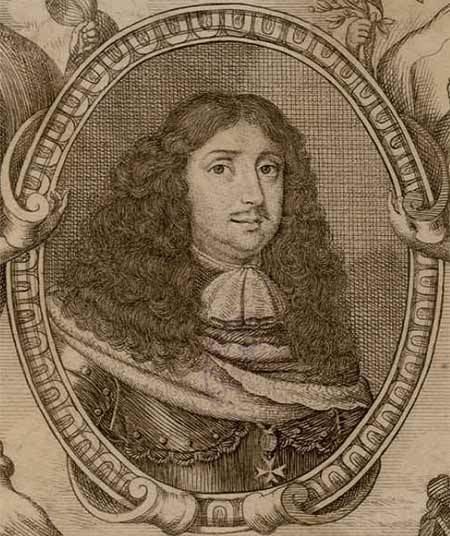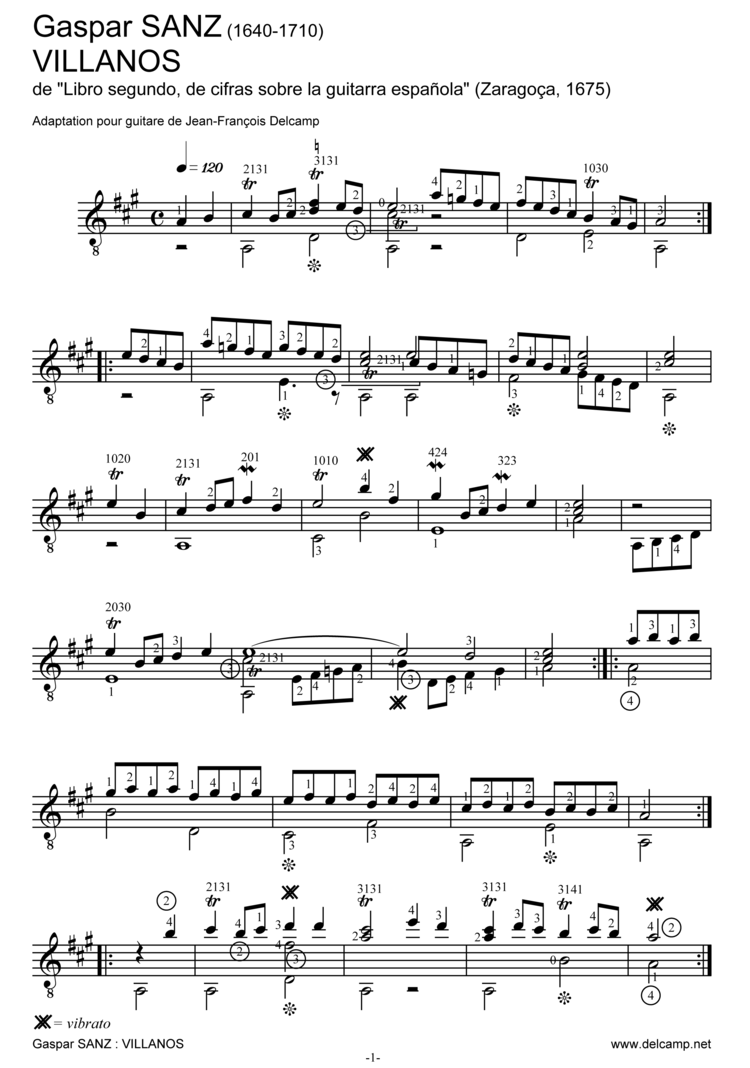Name Gaspar Sanz Role Composer | ||
 | ||
Books Spanish Suite: Score and Parts People also search for Jordi Savall, Hopkinson Smith, Elaine Martone, Paul Myers | ||
Gaspar sanz fol as espa oleta y canarios guitarra barroca
Francisco Bartolomé Sanz Celma (April 4, 1640 (baptized) – 1710), better known as Gaspar Sanz, was an Aragonese composer, guitarist, organist and priest born to a wealthy family in Calanda in the comarca of Bajo Aragón, Spain. He studied music, theology and philosophy at the University of Salamanca, where he was later appointed Professor of Music. He wrote three volumes of pedagogical works for the baroque guitar that form an important part of today's classical guitar repertory and have informed modern scholars in the techniques of baroque guitar playing.
Contents
- Gaspar sanz fol as espa oleta y canarios guitarra barroca
- Pavanas gaspar sanz two arrangements
- Biography
- Influence
- References

Pavanas gaspar sanz two arrangements
Biography

His birth date is unknown but he was baptized as Francisco Bartolomé Sanz Celma in the church of Calanda de Ebro, Aragon on 4 April 1640 later adopting the first name "Gaspar".

After gaining his Bachelor of Theology at the University of Salamanca, Gaspar Sanz travelled to Naples, Rome and perhaps Venice to further his music education. He is thought to have studied under Orazio Benevoli, choirmaster at the Vatican and Cristofaro Caresana, organist at the Royal Chapel of Naples. He spent some years as the organist of the Spanish Viceroy at Naples.
Sanz learned to play guitar while studying under Lelio Colista and was influenced by music of the Italian guitarists Foscarini, Granata, and Corbetta. When Sanz returned to Spain he was appointed instructor of guitar to Don Juan (John of Austria), the illegitimate son of King Philip IV and Maria Calderon, a noted actress of the day.
In 1674 he wrote his now famous Instrucción de Música sobre la Guitarra Española, published in Saragossa and dedicated to Don Juan. A second book entitled Libro Segundo de cifras sobre la guitarra española was printed in Saragossa in 1675. A third book, Libro tercero de mùsica de cifras sobre la guitarra española, was added to the first and second books, and all three were published together under the title of the first book in 1697, eventually being published in eight editions. The ninety works in this masterpiece are his only known contribution to the repertory of the guitar and include compositions in both punteado ("plucked") style and rasqueado ("strummed") style.
In addition to his musical skills, Gaspar Sanz was noted in his day for his literary works as a poet and writer, and was the author of some poems and two books now largely forgotten. His excellent translation of the celebrated L'huomo di lettere by Jesuit Daniello Bartoli first appeared in 1678, with further editions in 1744 and 1787.
He died in Madrid in 1710.
Influence
His compositions provide some of the most important examples of popular Spanish baroque music for the guitar and now form part of classical guitar pedagogy. Sanz's manuscripts are written as tablature for the baroque guitar and have been transcribed into modern notation by numerous guitarists and editors; Emilio Pujol's edition of Sanz's Canarios being a notable example. Sanz's tablature is remarkable in that it is topologically correct, representing the first string in the lower line and the fifth string in the highest printed line. In this epoch, guitars only had five strings. It also features the "italian alphabet", a shorthand system that assigns a chord to each letter, so that melodic chord progressions can be written and read very neatly (with rhythm information) as a simple sequence of letters, a concept related to the recent Nashville system. For example, there is a "Zarabanda francesa" (french sarabande) which includes the sequence CIFI+H2+G2K2IFCM2N2CAIC, which means:
Gaspar Sanz strongly influenced some twentieth-century composers.
